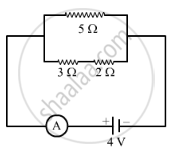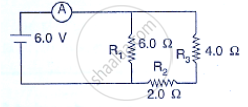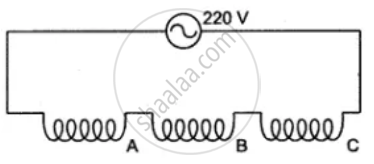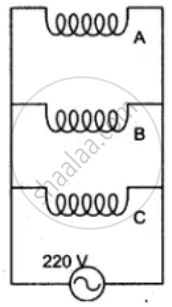Advertisements
Advertisements
प्रश्न
उत्तर
The fuse helps to control the maximum current in an electrical circuit. The fuse protects an electrical circuit by melting and breaking the circuit, whenever the current exceeds the pre-determined limit in the circuit. Due to low melting point, the fuse wire melts and then breaks the circuit.
APPEARS IN
संबंधित प्रश्न
<p> Define the unit of electric current (or Define ampere).
Which instrument is used to measure electric current? How should it be connected in a circuit?
Which statement/statement is/are correct?
1. An ammeter is connected in series in a circuit and a voltmeter is connected in parallel.
2. An ammeter has a high resistance.
3. A voltmeter has a low resistance.
(a) 1, 2, 3
(b) 1, 2
(c) 2, 3
(d) 1
(a) With the help of a circuit diagram, obtain the relation for the equivalent resistance of two resistances connected in parallel.
(b) In the circuit diagram shown below, find:
(i) Total resistance.
(ii) Current shown by the ammeter A

Find the potential difference required to pass a current of 0.2 A in a wire of resistance 20Ω
Three resistors of 6.0 𝛀, 2.0𝛀 and 4.0𝛀 are joined to an ammeter A and a cell of e.m.f. 6.0 V as
shown in fig 8.52 Calculate:
(a) the effective resistance of the circuit and
(b) the reading of ammeter.

The diagram shows two ways of connecting three lamps P, Q and R to A.C. supply of 220 V.


Explain with the help of a diagram how does 'short circuiting' occur in an electric kettle.
Match the items in column-I to the items in column-II:
| Column - I | Column - II | ||
| (i) | electric current | (a) | volt |
| (ii) | potential difference | (b) | ohm meter |
| (iii) | specific resistance | (c) | watt |
| (iv) | electrical power | (d) | joule |
| (v) | electrical energy | (e) | ampere |
